Tory MP Mark Francois has lambasted the UK’s defence procurement system, arguing that mismanagement is directly jeopardising the safety of Armed Forces personnel.
In a harshly critical report published by the Common’s defence committee, Francois states that the procurement system’s bureaucracy and inefficiency has left the country with “an extremely limited reserve of fighting equipment, including warships, modern armoured vehicles or combat aircraft”.
The most glaring example of these issues, according to Francois, is the Ajax armoured vehicle programme. This £5.5bn project has faced numerous setbacks, including safety concerns. It was reportedly so noisy during trials that troops testing it could potentially have suffered hearing loss.
Despite Defence Secretary Ben Wallace’s assertion that the project is back on track, Francois remains skeptical. He claims that the “Ajax trials are a black mark on the record of the Ministry of Defence,” and adds that “Concerns around safety should not be swept under the rug.”
The report describes the UK equipment procurement system as “overly stratified, far too ponderous, with an inconsistent approach to safety, very poor accountability and a culture which appears institutionally averse to individual responsibility.”
It outlines the issues plaguing the Ajax programme, including delays in design, demonstration, trials, and missed delivery schedules, all culminating in missed Initial Operating Capability (IOC) dates.
“Ajax represents the worst of UK procurement,” the report states. A troubling 1,200 requirements were imposed on a vehicle based on an existing design, leading to unnecessary delays and complications. Additional issues within the contract, such as overlap between demonstration and manufacturing, phased ‘drops’, and changing definitions of IOC, only served to exacerbate the situation.
The report’s conclusions signal a dire need for reform within the Ministry of Defence’s procurement system. It asserts that dysfunctional procurement processes are putting Armed Forces personnel in harm’s way and underscores a significant issue – the detrimental impact on troop safety due to equipment inadequacy. For the sake of the UK’s security and the welfare of its troops, urgent action is needed it claims.


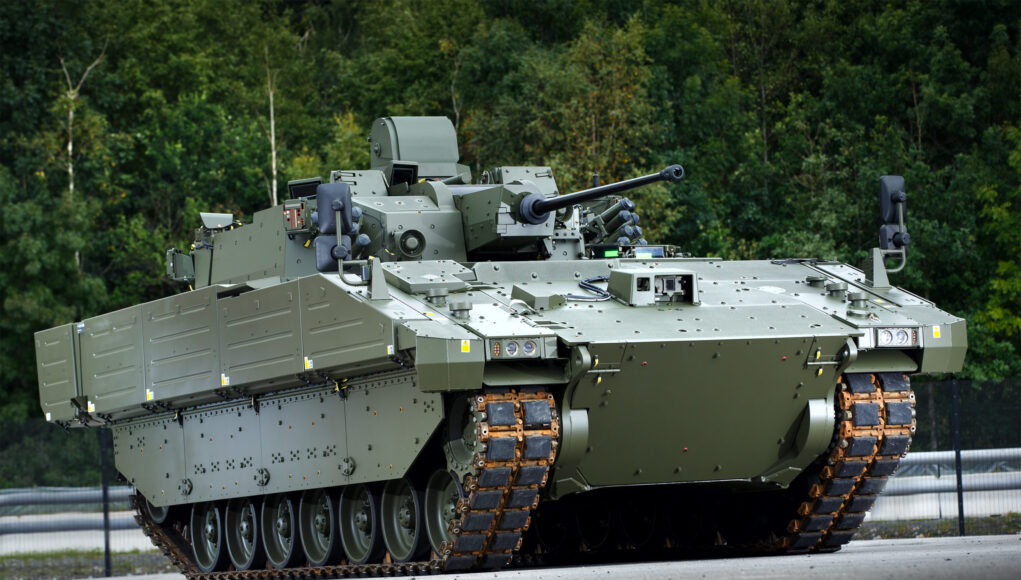




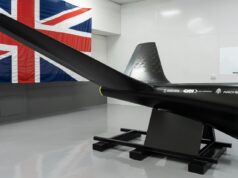
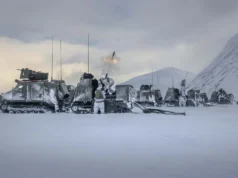

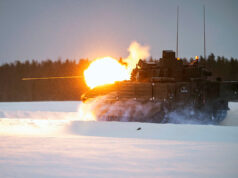

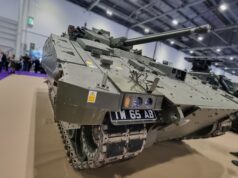

Still waiting to hear why the order wasn’t given to BAE. At least they understood the requirements and submitted an honest bid.
Because BAE didn’t win the contract. The UK evaluated both vehicles and chose Ajax.
BAE need to take part responsibility for not being picked.
They only said CV90 build would be moved to Newcastle after GDUK was chosen. Equally they only said that the Newcastle factory would close 2 years after GDUK was chosen. By 2012 there was nothing that could be done to save the Newcastle factory once Terrier left production. BAE didn’t take it seriously enough, and now they have paid the price as they cannot build vehicles on their own and had to merge that part of the company with Rheinmettall.
Blair chose the Iveco LMV jeep and had it up armored and turned into Panther , it was more expensive than better protected vehicles and not even on the short list. It had many failings, fogging up armored windows, breaking engine belts, leaking fuel bungs, overheating brake discs, one door blocked with Bowman . No access plates in armored floor for greasing prop shafts! It wallowed off road making people sea sick with high center of gravity. Think MOD evaluation is swayed by ministers own agendas !
Blair, as in Tony Blair? Prime Ministers really don’t select the winning bids at Abbey Wood – why would he have specially angled for adoption of this Italian origin vehicle? But of course politics does rear its ugly head in procurement.
I am impressed by your Panther knowledge – I had not heard much about it before. I just heard it was short of internal stowage space and carried few passengers, that BAE Newcastle converted the Italian base vehicles to Brit Spec, and that its mine/IED resistance was very good.
Wiki says the whole fleet was put up for sale in 2018 after barely 10 years use.
The UK evaluated Bids from the two companies, not vehicles. GDUK had no vehicle, not even a Technology Demonstrator, apparently – and had no factory. However BAE had shown off a Technology Demonstrator vehicle (a real CV90 suitably dressed with sensors etc!) in Feb 2010 at the IAV Exibition in London.
For whatever reason GDUK was selected over BAE later in 2010 – cynics will say it had a lot to do with bringing employment to a deprived part of Wales. Others say that MoD wished to ‘teach BAE a lesson’ – that they could not expect to get all MoD work – and some punishment was to be meted out for failings with the Nimrod MRA.4 project. A phrase ‘Anyone But BAE’ was supposedly in widespread use (some say shortened to ‘ABBA’ when it was to be used in veiled speech.)
I doubt BAE did not take a £5.5bn order from MoD seriously especially when they had little to no other AFV work (as you say). They had had to close their new tank factory at Leeds in 2004 ( a very painful and recent memory in 2010) and would have been desperate for work for the remaining new tank factory at Newcastle – puzzling that BAE only suggested this after they had lost the order to GDUK – serious error on their part, but I doubt it would have tipped the decision their way.
The MoD had to wait until 2014 to see a prototype from GDUK.
I wish BAE still made AFVs at the Newcastle factory but the orders were not forthcoming. They (including predecessor companies) made good AFVs without over-long development times and to a fair price.
We wait to see how BAE’s partnership with Rheinmetall will work out and hope that CR3 is a success.
GDUK did have a tech demonstrator based on ASCOD of which 256 were in service with FOC in Austria and Spain, and another order from Spain of 200+ on the horizon.
Ajax differs significantly from ASCOD, just as BAE’s proposal also differed significantly from CV90. The Norwegian variant isn’t as advanced as Ajax (or a BA CV90 variant) in terms of sensors and recon capabilities.
The order at the time GDUK was chosen would’ve been a lot more than £5.5 billion as 1,300 vehicles were still planned. Given that number was much larger than the number of CV90s built at that point (1,200 ordered as of 2014 so the number built by 2010 could be half that of the FRES SV contract), it makes it even more strange that BAE only said they would move CV90 production to Britain after GDUK was chosen. Sure it may not have swayed the decision but had BAE stressed the Newcastle factory would close if not chosen, and if chosen all CV90 would be UK built, especially in a city that had really been let down by the MOD with the demise of Swan Hunter a few years earlier (even though it was effectively dead since 1993), it would surely have affected the decision considerably.
Closing a factory is always much worse for publicity than opening a factory is good for publicity.
Anyone but BAE certainly was floated around, and if that’s really what swayed the decision as to punish BAE, it was very stupid. Babcock building T31 has had an great effect on the shipbuilding without killing BAE’s shipbuilding capability.
The Newcastle factory is still standing, but there would be little point in reopening it beyond a symbolic gesture. Aside from the fact that there isn’t the demand, it’s quite a small facility and an expansion of Telford would be better.
RBSL was a necessity due to the demise of BAE’s ability to build AFV’s after losing the FRES SV contract. Of course it’s yet to be seen if it’ll be a success beyond upgrades and building under contract.
Thanks Louis. Some good info, some of which was new to me. Did not realise GD had actually shown a TD (based on ASCOD veh). I think there is greater deviation of Ajax from ASCOD than CV90 recce from CV90 IFV. That should have been flagged up as a risk.
The Norwegian CV90 recce may be less sophisticated than Ajax, because the Norwegian MoD has not asked for such sopisticated sensors. Surely BAE would have fitted what UK MoD required and not what the Norwegian army has.
The Newcastle tank factory once was huge of course (one third of a mile long) – pity it has atrophied.
Agree that formation of RBSL was a necessity – not an issue for me – although BAE can still build AFVs (CV90!) but overseas of course.
In your other comment you mentioned the Norwegian recce CV90 was a success but a British variant would be significantly different to the Norwegian variant anyway.
With the rebranding of WFEL as KNDS UK, and the high possibility of a Hanwha facility for K9, along with RBSL and GDUK, the UK should be fine building vehicles here. Whether RBSL can develop its own vehicles remains to be seen.
Thanks Louis. Certainly the British Army’s specification for a recce vehicle would be different to that for Norways. But it is a good omen if Norway is happy with their version.
I have only just started to get used to Fairey Engineering’s ‘new’ name (WFEL) when you tell me that it has changed again!
You seem sure we will buy tracked K9 (in addition to wheeled Archer, clearly) and that it will be built under licence. Do you have inside info?
We certainly have a number of AFV manufacturing facilities – we both count three – and LM can build turrets for light/medium AFVs of course.
I sense that GDUK’s operation in Wales is more of an Assembly Hall. WFEL’s site seems more comprehensive for its production of Boxer as they will build the hulls whereas GDUK imports its Ajax hulls from GD Spain. I am sure that RBSL has a good facility as they also build Boxer and convert CR2 to CR3.
Certainly RBSL could develop the capability to design and develop new AFVs from scratch even if they do not have that today; they will have gained some D&D experience with CR3.
Sorry for the late reply Graham.
There are a number of differences between FRES SV and the Norwegian CV90.
1. FRES SV was replacing a vehicle that entered service in 1970, CV90 CRV was to replace a vehicle that entered service in the mid 1980s.
2. Norway already had more than 100 CV90 that had been in service 16 years prior. Britain of course did not operate either CV90 or ASCOD.
3. CV90 CRV is very similar in size to the vehicle it replaced, meaning no change in doctrine was needed, in sharp contrast to Ajax.
4. There was already a rolling production line for CV90. It’s a minor point but both FRES SV candidates weren’t in production in the UK.
5. Norway had no requirement for parts to be sourced from Norway. Although a small point, it still adds pressure on FRES SV.
6. The Norwegian army has always had a very clear purpose to fight against an enemy that hasn’t changed much. Britain on the other hand was in the midst of Afghanistan and had just pulled out of Iraq.
7. The Norwegian CV90 CRV order was small, and part of a much larger order of vehicles that had already been produced. In contrast FRES SV was a significant deviation, with lots of new variants. This means that the spotlight was completely on FRES SV.
3 and 7mean that the MOD interfered a lot with Ajax and micro managed with lots of different requirements for the vehicle.
1 and 5 just added pressure on the programme as it was very very urgent so more likely to be rushed and aspects looked over.
2 and 3 mean that not only did the army have no experience with either vehicle, they had no experience with recce in a vehicle of that size.
6 just distracted the programme.
WFEL was renamed to KNDS UK recently when the group that owns KMW and Nexter decided to rename both companies and all subsidiaries to KNDS. It suggests more unity within the company.
Unfortunately I do not have inside knowledge on the final decision for MFP. The 3 realistic options left are Boxer, K9 and Archer. In my opinion K9 would be the best fit.
Hanwha said K9 for RA would be built in the UK. The participants in Team Thunder to take notice are LM and Pearson. LM is struggling for work, so turrets for K9 will be major. Pearson will build and assemble the vehicle, so that’ll add another AFV building facility. I only recently found this out, but those small engineering companies in Armstrong Works Newcastle I mentioned earlier include Pearson, so if K9 is chosen the Newcastle factory will actually build AFV’s again.
GDUK does need to stay around though, the main reason being UGV’s. It’s a pretty new vehicle type so it’d be a shame if Britain lost out so early on. MUTT is already in service with the British Army and the TRX was shown at the recent army expo with 2 12.7mm machine guns and 8 Brimstone missiles. Given both the Boxer and Ajax Brimstone variants also only carry 8 Brimstones whilst being much larger, more expensive and crewed, it seems like a very good option.
RBSL can build turrets and chassis, LM can build turrets and WFEL can build chassis, thus giving 2 complete vehicle suppliers not including GDUK. The issue then becomes constrained at engines with RR being the only company which still has to build under licence from MTU (ironically RR owns MTU).
Perkins is a big loss which I’ve only recently noticed cannot build AFV engines anymore.
Hi Louis, thanks for your assesment of the differences between Norway’s and UK’s approach to developing a new armoured recce vehicle. I agree.
The political top-down involvement included selecting the GDUK offering over the BAE one. The MoD top-down involvement included foisting the 40mm CTAS onto the project (not that I disagreed) in the interest of commonality with WCSP.
I am intrigued at the army Requirement setting and this is not Open Source – I surmise that much influence was engendered by earlier involvement with the Americans on the TRACER project, the Americans favouring large and heavy recce vehicles rather than small and agile ones – and the armour protection and firepower to be able to conduct recce by fighting rather than recce by stealth.
Your mention of Pearson is interesting, know to generations of soldiers, especially Sappers, as the company that produce the mine plough for ‘engineer tanks’. Now they may assemble SPGs.
I am sure GDUK will stay around after they have built the last of the Ajax family (and that will take a long time, as it is not a huge factory). They will remain the DA for Ajax and may well get some upgrade and Base Overhaul work in the future. Their website shows their involvement with Foxhound, MRVP and UGV, as you say. Interesting you mention UGVs as being new – in one sense they are but Germany had Goliath in WW2 and I worked on UGV projects at RARDE in the 1980s.
Their other operating division at GDUK Blackwood ‘provides avionic and tactical communication and information systems to a global customer base’.
I had not previously heard that Perkins no longer make military engines – that is a huge blow.
Too late for me to edit but I forgot to add, all engineering companies in Armstrong Works are either owned by Pearson Engineering or are sister companies, so the entire factory can be used for AFV building.
Thanks. Not sure if Imentioned that I did my REME Young Officer attachment to Vickers, Newcastle in 1979 – old tank factory in those days – they could do everything including making turret front castings using their own foundry! I saw the last Chieftain ARRV being built.
There is of course a big difference between a ‘tank factory’ and an ‘assembly hall’.
No you didn’t mention that before, interesting stuff!
Certainly is a big difference between a tank factory and an assembly hall as the Ajax programme will show you.
Something interesting I saw recently is Sheffield Forgemasters is expanding. It’d certainly be good to reclaim some domestic steel making for the MOD.
i can never understand why it went so wrong to begin with, Tanks used to be built in Newcastle for lord knows how long with no real issues, gkn built warrior again no issues so why did ajax be such a problem, or was it too many chiefs and not enough indians again,and why did we pay so much up front surely we pay for fully working prototypes to ensure it,s supposed to be as good as it is before paying for the full order, or were the mod blindsided
Fully working prototypes, there’s an interesting one…
I think the problem is constantly moving goalposts Andy, as kit and extra armour has been added as we go.
the goal posts bit i can fully understand, bit like the old hurry up and wait..
Ajax isn’t a tank, its a recce vehicle.
The article hits the nail on the “personal responsibility”. This applies across the board in the UK and if we made this the mantra in the UK it would go a very long in fixing many of the UK’s flaws. It is a history lesson in looking at what happened after the execution of Admiral John Byng during the seven years war. He was charged with “failing to do his utmost” and was duly convicted and executed. After that all Royal Navy captains and Admirals took the fight to the enemy…an object lesson in forcing people to take responsibility for their own failures thus forcing others to work harder.
Totally agree Andrew, personal responsibility has been virtually ditched in the UK. It’s regarded as a dirty word.
There’s a label/condition for absolutely everything and nothing is anyone’s fault.
Child molesters are about the only section of society left that ‘ it’s definitely their fault ‘, I don’t doubt that will eventually change too!
The good news is the admission things are not fit for purpose. However, the introduction time for new vehicles is too protracted and needs to speed up.
Yes. It seems to take as long to design, develop and test an AFV as an aircraft carrier!
Just been flicking through Google News , concerning Ben Wallace and his decision too stand down as Defence minister at the next Cabinet reshuffle Could Mark Francoir be jockeying for Wallaces position as Defence minister with this statement just a thought
Wouldn’t that be something 😀
On uk defence Navy page He’s also critising the T26 build time and cost looks like he could be positioning himself for Ben’s departure
Guess we’ll have to wait and see 👀